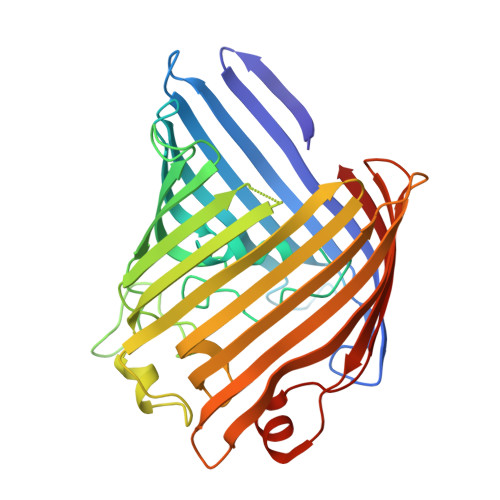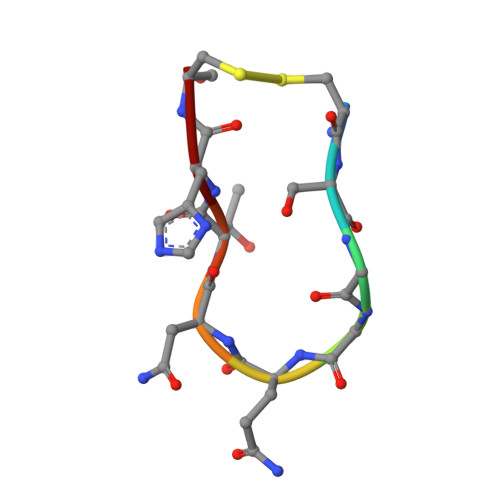Mating pair stabilization mediates bacterial conjugation species specificity.
Low, W.W., Wong, J.L.C., Beltran, L.C., Seddon, C., David, S., Kwong, H.S., Bizeau, T., Wang, F., Pena, A., Costa, T.R.D., Pham, B., Chen, M., Egelman, E.H., Beis, K., Frankel, G.(2022) Nat Microbiol 7: 1016-1027
- PubMed: 35697796
- DOI: https://doi.org/10.1038/s41564-022-01146-4
- Primary Citation of Related Structures:
7SZI - PubMed Abstract:
Bacterial conjugation mediates contact-dependent transfer of DNA from donor to recipient bacteria, thus facilitating the spread of virulence and resistance plasmids. Here we describe how variants of the plasmid-encoded donor outer membrane (OM) protein TraN cooperate with distinct OM receptors in recipients to mediate mating pair stabilization and efficient DNA transfer. We show that TraN from the plasmid pKpQIL (Klebsiella pneumoniae) interacts with OmpK36, plasmids from R100-1 (Shigella flexneri) and pSLT (Salmonella Typhimurium) interact with OmpW, and the prototypical F plasmid (Escherichia coli) interacts with OmpA. Cryo-EM analysis revealed that TraN pKpQIL interacts with OmpK36 through the insertion of a β-hairpin in the tip of TraN into a monomer of the OmpK36 porin trimer. Combining bioinformatic analysis with AlphaFold structural predictions, we identified a fourth TraN structural variant that mediates mating pair stabilization by binding OmpF. Accordingly, we devised a classification scheme for TraN homologues on the basis of structural similarity and their associated receptors: TraNα (OmpW), TraNβ (OmpK36), TraNγ (OmpA), TraNδ (OmpF). These TraN-OM receptor pairings have real-world implications as they reflect the distribution of resistance plasmids within clinical Enterobacteriaceae isolates, demonstrating the importance of mating pair stabilization in mediating conjugation species specificity. These findings will allow us to predict the distribution of emerging resistance plasmids in high-risk bacterial pathogens.
Organizational Affiliation:
MRC Centre for Molecular Microbiology and Infection, Imperial College, London, UK.















